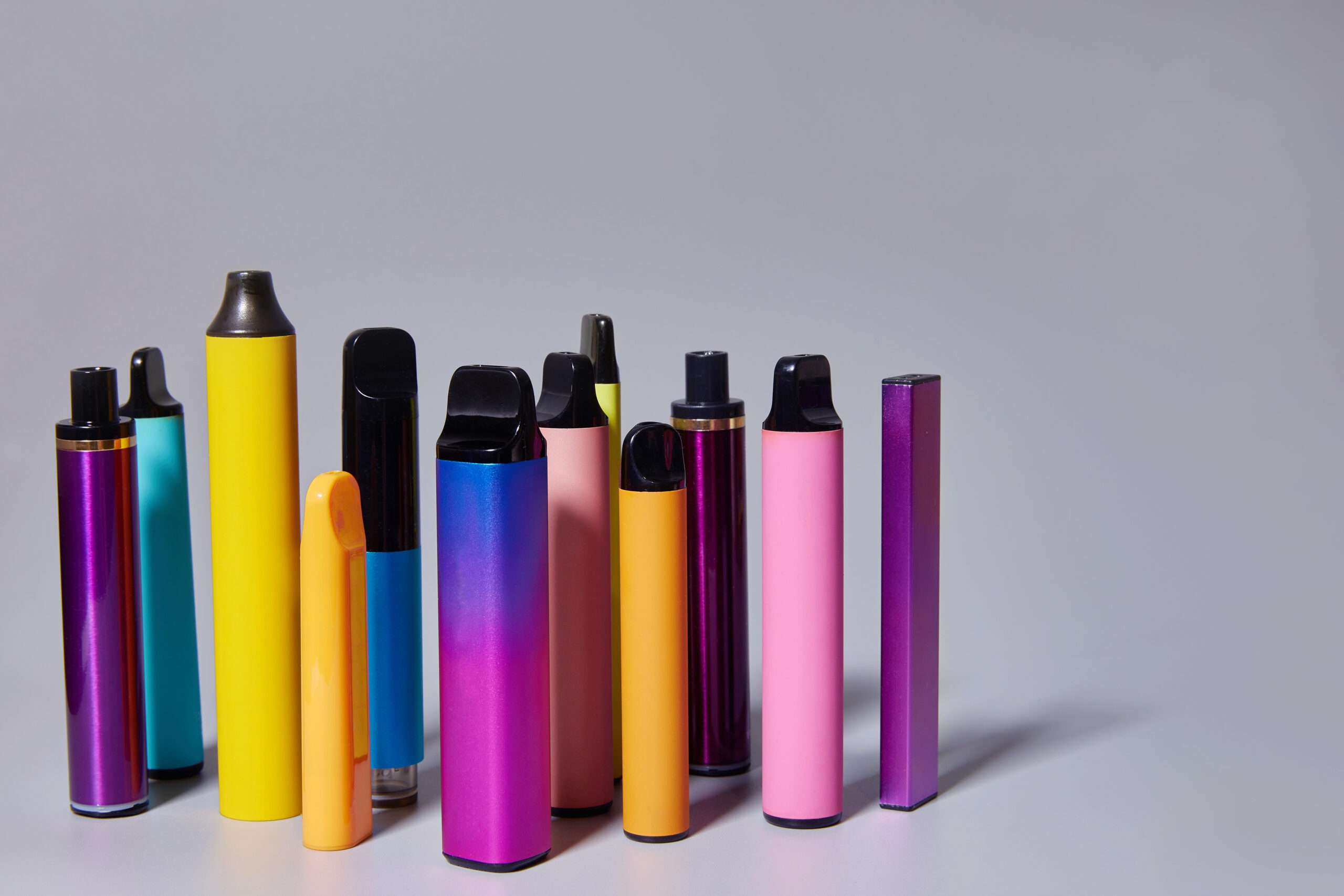
What Happens in the Real World When Flavors Are Banned in Nicotine Products?
There’s been a flurry of regulatory activity in the nicotine industry recently. The new administration withdrew the U.S. Food and Drug Administration’s (FDA’s) proposed menthol ban on cigarettes in the United States. FDA also authorized the marketing of 20 ZYN nicotine pouch products. Another FDA proposal currently on hold could limit nicotine levels to such a minimal level that many in the industry feel it is a step toward prohibition. Several other regulatory discussions on nicotine products, including the role of flavors, are far from settled.
Many of these regulatory policies have good intentions. But there is real-world evidence suggesting that flavor and other nicotine bans may have unintended consequences—most notably, increasing cigarette smoking rates among adults and youth alike and creating a black market that is extremely dangerous for consumers. This article examines the scientific evidence surrounding flavored nicotine products and the broader implications of a flavor ban for public health.
U.S. Regulations Create Delays and Monopolies Over Reduced Risk Products
But before we dive into that, let’s review some of the context behind the U.S. approach to nicotine regulation. The U.S. regulatory framework presents a challenge, particularly in relation to European counterparts. Unlike the United Kingdom and many other European countries, where a notification system governs nicotine products, FDA requires premarket authorization. This process, intended to ensure product safety, has been marked by extensive delays and inconsistencies, particularly concerning flavored products. For example, the review of ZYN’s nicotine pouches took over four years.
The FDA’s Premarket Tobacco Product Application process is expensive and time-consuming, requiring extensive scientific studies, toxicological reports, and marketing plans. The time-consuming approval processes create a high barrier to entry for smaller, independent start-ups who often drop out due to insufficient funds. This regulatory process advantages large tobacco companies and reinforces their monopoly in the marketplace. As of 2024, Philip Morris International (PMI) and British American Tobacco (BAT) were two of the largest players in the Reduced-Risk Products (RRP) segment. PMI, with its IQOS heated tobacco system, holds a dominant position in the global RRP market. BAT’s Vuse leads the U.S. e-cigarette market, capturing over 40 percent of the market, ahead of Juul and other competitors.
Banning Flavors May Hamper the Smoking Cessation Movement
Studies consistently show that adult smokers transitioning to smoke-free alternatives prefer non-tobacco flavors. A survey of over 20,000 vapers found that those who initiated vaping with flavored e-cigarettes or switched from tobacco to non-tobacco flavors were significantly more likely to quit smoking.[1] Similarly, a large-scale survey of nearly 70,000 vapers confirmed that fruit and dessert flavors are the most popular, whether during e-cigarette initiation, smoking cessation, and/or long-term e-cigarette use.[2]
While the assumption of those in favor of banning flavors is that it reduces the recruitment of non-users of nicotine, especially youth, the consequences of such a ban can be very different. Researchers from the Yale School of Public Health[3] used retail sales data to assess the effect of e-cigarette flavor bans on the sales of both vapes and cigarettes across 44 U.S. states. The results showed:
- The sale of cigarettes increased as the sales of vapes declined.
- The retail data found a tradeoff of 12 additional cigarettes for every 1 less 0.7 mL flavored electronic nicotine delivery systems (ENDS) pod sold due to ENDS flavor restrictions.[4]
- 80% of the increase in cigarette sales came from tobacco-flavored cigarettes (menthol cigarettes were also banned).
Harm reduction strategies fundamentally require smokeless flavored nicotine products, including e-cigarettes and nicotine pouches. Flavors provide a clear distinction between smoking and smokeless nicotine products like vapes and nicotine pouches. They allow individuals to tailor the experience to their preferences, and they are essential to smokers looking to quit permanently, in large part because quitting smoking often leads to a rapid recovery of taste sensation. This is thought to encourage smokers to leave cigarettes behind as their experience of flavors is enhanced, and they naturally come to prefer those flavors that do not remind them of smoking. Indeed, some FDA-approved drug products for smoking cessation, like Nicorette, come in multiple flavors, including fruit.
Addressing Concerns About Youth Appeal
The main argument for flavor bans is that they reduce youth appeal. Once again, this assumption is not supported by surveys. Adolescents are drawn to adult behaviors regardless of flavor availability, as evidenced by historical cigarette consumption trends. Cigarettes have been immensely popular with teenagers and adolescents long before flavors entered the market. However, that number has been declining since the introduction of e-cigarettes. Today, the number of teen cigarette smokers has fallen. Research on trends in cigarette smoking among United States adolescents found that in 1991, 10.5% of high school boys used cigarettes daily, and in 2021, the number had dropped to 0.8%.
The 2023 National Survey on Drug Use and Health (NSDUH) reports that in 2023, 7.4% of adolescents aged 12 to 17 used tobacco products or vaped nicotine in the past month. Of those, 74.9% only vaped nicotine products and did not use other tobacco products like cigarettes.
Research indicates that when prices of e-cigarettes increase, youth vaping falls, but youth smoking rises. E-cigarettes and cigarettes function as substitutes, and if e-cigarette flavors are banned, indications are that smoking among youth will increase as a result. Health policies cannot ignore this fact in pursuit of a utopian reality in which youth have no access to any substances. Harm reduction is a realistic and achievable goal, whereas banning vice products may not be.
Furthermore, when it comes to youth access prevention of nicotine products, effective age verification measures—particularly in online sales—are the most common-sense approach. Contrary to public perception, online sales platforms with stringent age-gating mechanisms may be more effective at restricting youth access than brick-and-mortar stores, where human error or oversight is a factor. Comprehensive digital verification, including government-issued ID validation and restricted delivery protocols, can safeguard against underage purchases.
Bans Lead to Illicit Markets and Public Safety Concerns
When legal access to flavored nicotine products is restricted, illicit markets inevitably emerge. The demand for flavored alternatives does not disappear; instead, consumers turn to unregulated sources. These unregulated products pose significant health risks, as they often lack quality control, contain harmful additives, or are misrepresented in terms of nicotine content. The proliferation of black-market vapes following bans in states like California highlights the dangers of such policies.
International examples further reinforce these concerns. In jurisdictions where prohibitionist policies have failed historically—such as alcohol during the Prohibition era—governments have recognized the need for regulated access to minimize public harm. Learning from these lessons is crucial in shaping effective nicotine regulations.
Moreover, menthol bans further complicate the regulatory landscape. While advocates of menthol bans argue that menthol enhances smoking appeal, data suggest that banning menthol products does not lead to widespread cessation. Instead, consumers may turn to illegal markets or modify their products by adding menthol crystals, drops, or oil, undermining policy intent and increasing health risks.
Flavors help adults achieve long-term smoking cessation
The broader goal of tobacco control is to reduce smoking rates and associated health risks in the long term. Given that vaping is widely acknowledged as less harmful than smoking, restricting access to flavored alternatives may inadvertently drive consumers back to combustible cigarettes.
Scientific research underscores the role of flavors in long-term smoking cessation. Many former smokers start with tobacco-like flavors but eventually transition to fruit, mint, or dessert flavors as their taste perception recovers post-smoking. Studies also highlight the concept of “flavor fatigue,” wherein users cycle through various flavors to sustain satisfaction—akin to how coffee drinkers vary their consumption habits, ranging from espressos to lattes.
A national survey found that state-imposed flavor restrictions resulted in a 3.6-percentage-point decline in vaping but a 2.2-percentage-point increase in smoking. We have plenty of evidence that nicotine alternatives are practical long-term smoking cessation tools. Whether the total number of nicotine users increases or decreases is less critical than significantly reducing health risks associated with tobacco use and thus saving millions of lives.
Smoking cessation is not an all-or-nothing proposition. As a result, dual-use or concurrent use of smoking and alternative nicotine products is frequently criticized. However, research suggests it serves as a transitional phase toward complete smoking cessation. Many dual users eventually quit smoking entirely, and failing to recognize the utility of dual use may hinder smokers from transitioning to less harmful alternatives. Findings from the PATH Study (Population Assessment of Tobacco and Health) suggest that e-cigarettes may aid smoking cessation for some individuals, particularly those who transition entirely to e-cigarettes. The effectiveness of e-cigarettes as a cessation tool depends on factors such as nicotine concentration, smoking history, and individual cessation efforts.
Need for Balanced, Evidence-Based Regulation
The conversation around nicotine product regulation must be informed by scientific evidence. The data are consistent: banning flavors does not eliminate nicotine consumption and may redirect consumers toward more harmful alternatives. Furthermore, regulatory inefficiencies in nicotine policy limit consumer choice and may reinforce the dominance of combustible cigarettes.
Policymakers must prioritize balanced regulations that allow access to flavored alternatives for adult smokers while implementing age verification measures. The United States can learn from international models that embrace notification-based regulatory frameworks and combine that with the existing authorization system. An approach that adopts the best of both sides would be far more rational than what exists today on either side.
If the goal is to improve public health, the focus should shift from prohibitionist policies toward pragmatic, science-based approaches that genuinely reduce smoking-related harm.
[1] Russell, C., McKeganey, N., Dickson, T., & Nides, M. (2018). Changing patterns of first e-cigarette flavor used and current flavors used by 20,836 adult frequent e-cigarette users in the USA. Harm reduction journal, 15(1), 33. https://doi.org/10.1186/s12954-018-0238-6
[2] Farsalinos, K., Russell, C., Polosa, R., Poulas, K., Lagoumintzis, G., & Barbouni, A. (2023). Patterns of flavored e-cigarette use among adult vapers in the USA: an online cross-sectional survey of 69,233 participants. Harm Reduction Journal, 20(1), 147. https://doi.org/10.1186/s12954-023-00876-w
[3] Friedman, A. S., Pesko, M. F., & Whitacre, T. R. (2024). Flavored E-Cigarette Sales Restrictions and Young Adult Tobacco Use. JAMA Health Forum, 5(12), e244594. https://doi.org/10.1001/jamahealthforum.2024.4594
[4] Friedman, A. S., Pesko, M. F., & Whitacre, T. R. (2024). Flavored E-Cigarette Sales Restrictions and Young Adult Tobacco Use. JAMA health forum, 5(12), e244594. https://doi.org/10.1001/jamahealthforum.2024.4594
FDLI is a nonprofit membership organization that offers education, training, publications, and professional networking opportunities in the field of food and drug law. As a neutral convener, FDLI provides a venue for stakeholders to inform innovative public policy, law, and regulation. Articles and any other material published in Update represent the opinions of the author(s) and should not be construed to reflect the opinions of FDLI, its staff, or its members. The factual accuracy of all statements in the articles and other materials is the sole responsibility of the authors.

 Dr. Marina Murphy, Senior Director of Scientific Affairs at Northerner (parent company Haypp Group)
Dr. Marina Murphy, Senior Director of Scientific Affairs at Northerner (parent company Haypp Group)






